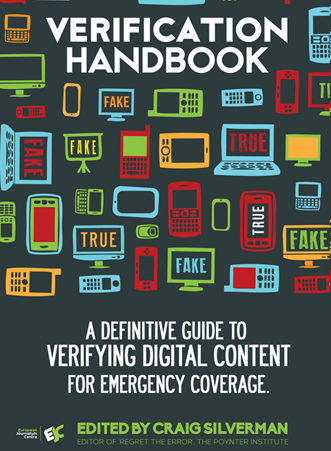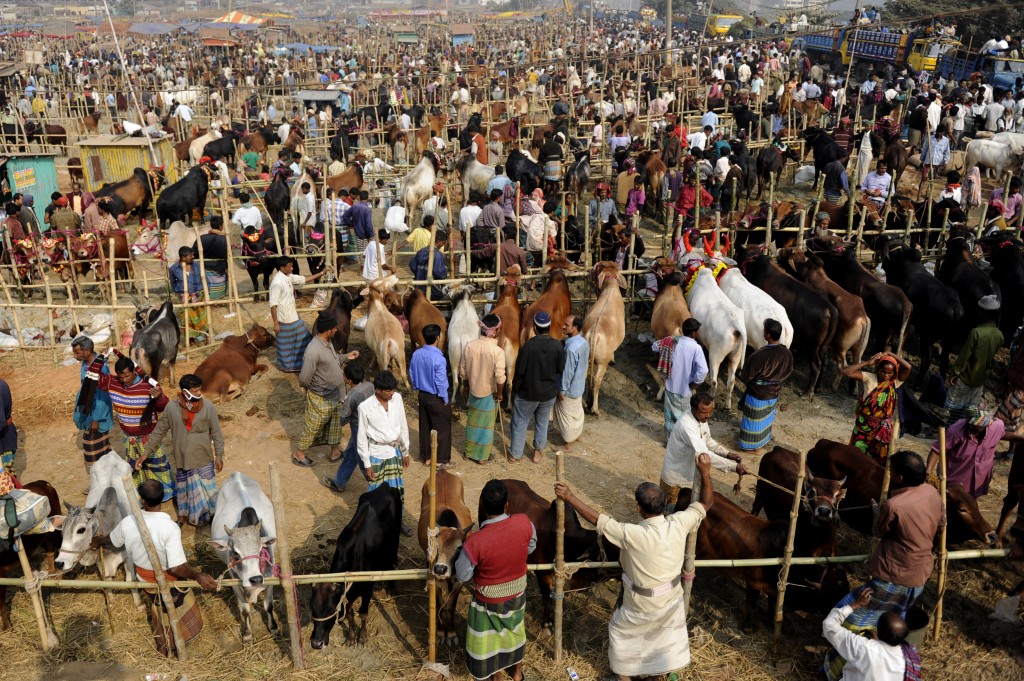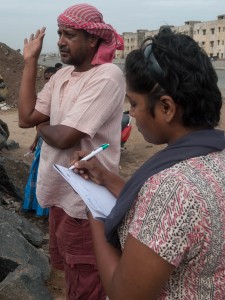Journalists@Work: Pramila Krishnan
Pramila Modachur Krishnan is a senior reporter at the Deccan Chronicle, an English-language daily in Chennai, the capital of India’s Tamil Nadu state. Pramila’s parents are both farmers, and she was the first in her family to get a university education; she has both a bachelor’s and master’s degree. Now 27, she’s especially interested in reporting about the environment and issues facing women and children. In 2013, she took part in a DW Akademie workshop on environmental reporting in Chennai. Her pluck, resourcefulness and dedication convinced her trainers to recommend she attend the recent UN climate conference in Warsaw. onMedia asked her a few questions about her chosen career.
![]() read more
read more
35 million images now free for sharing
Getty Images has made a big part of its photo collection free for embedding in non-commercial blogs and sharing via social media.
It’s a very bold move for one the world’s biggest photo agencies, and for an industry that is highly protective of copyright.
Getty says the Internet makes it easy for its images to be used without permission or with proper attribution when people right-click and save a photo from a website or grab a screen shot.
By removing their watermark and making images free for non-commerical use, the photo agency says its images will appear in a custom “Embedded Viewer”: think of YouTube’s embedded player. This “Embedded Viewer” includes the proper copyright information, and when you click on the image, it takes users back to the licensing page on Getty’s website.
![]() read more
read more
Using graphics in your video, and using them well

Photo: flickr/gywst
Infographics can enhance a visual story’s appeal and are extremely helpful in presenting complex information in an easy-to-understand way. Now, it’s easier than ever to use graphics in your videos thanks to more advanced and user-friendly software. OnMedia’s Kyle James takes a look at how a production team from Indonesia used graphics effectively in their award winning video feature.
![]() read more
read more
Instagramming the news for a mobile audience
 Photographs, time-lapse videos, audio slideshows, animated infographics, magazine previews and video news stories in 15 second bites. These are just some of the ways leading media organizations are experimenting with the image sharing platform Instagram.
Photographs, time-lapse videos, audio slideshows, animated infographics, magazine previews and video news stories in 15 second bites. These are just some of the ways leading media organizations are experimenting with the image sharing platform Instagram.
Instagram was launched in 2010 as an iPhone application to produce and share square shaped photographs with a range of filters – a very smartphone nod to the classic Polaroid instamatic photograph.
The rest you might say is history.
In 2012 Instagram was bought by Facebook for $US 1 billion. The 15 second video feature was added in 2013. The Instagram application is also available for Android and Windows smartphones.
Instagram says it has more than 150 million active monthly users. And that’s what makes the platform interesting for media organizations – it’s a way of reaching new audiences who consume media on mobile devices and tapping into the conversations on a social media network devoted to images.
Here’s onMedia’s quick round up of some of the media organizations using Instagram which might make you look at this popular app in a different light. Plus, there’re some tips on creating Instagram video news for yourself.
![]() read more
read more
Coding for journalists: 10 hottest websites to teach yourself to code

Photo – Fotolia/spaxiax
Should journalists learn computer code? That’s a controversial question at the moment. The general consensus seems to be that today’s journalists need at least a basic level of technical literacy so when they team up with developers, they can better understand the language they speak. To get journalists up to speed, onMedia has prepared an overview of the best websites to help learn how to write code without having to turn into a hard-core programmer.
![]() read more
read more
Must Read – the Verification Handbook

Social media networks are valuable sources of information but not everything that is posted, tweeted and uploaded is true. And under the pressure of breaking news, many journalists struggle to find ways of verifying the authenticity of pictures and videos on the Internet or establishing the credibility of those posting information. Luckily, help is at hand with the excellent (and free) Verification Handbook, published by the European Journalism Centre and available online.
Written by reporters and human rights researchers from leading organizations such as BBC, Storyful and Amnesty International, the Verification Handbook is jam-packed with practical information, tools and case studies. The handbook drives home why journalists need to be diligent about verifying user-generated content and also provides plenty of pointers on how news reporters can do this for themselves.
![]() read more
read more
Strengthening community radio

Photo (cropped): PatCastaldo/Flickr
With their focus on local news and local issues, community radio stations can play a crucial role in providing independent information to communities. Localized content is vital regardless of whether an area has an established media landscape or is in a post-conflict situation with newly developing media.
DW Akademie project manager and media consultant Rüdiger Maack works closely with community stations in Tunisia where he is based. Maack shares some tips with onMedia about how community radio stations can increase their viability.
![]() read more
read more
Crowd reporting puts the squeeze on traditional journalism

Photo: Munir Uz Zaman/AFP/Getty Images
Critics of using social media to crowdsource news argue that people on the street aren’t objective and that their impressions of an event can’t be trusted. But in this guest blog post for onMedia, journalist Ranty Islam argues crowdsourcing is a key journalism tool that stems from a tradition older than the media itself – the bustling marketplaces and squares that have been used for information exchange since time immemorial.
![]() read more
read more
The risks of using Skype, Facebook, WhatsApp and Co.

Graphic: flickr/mmapstone
Most reporters use a whole bunch of different online tools and apps such as Skype, WhatsApp, Facebook, Gmail, Tumblr, Blogger, WordPress and Dropbox to make their work easier. To commemorate this year’s Safer Internet Day, onMedia highlights a few risks associated with some of the most popular journalism tools and suggests possible, more secure alternatives.
![]() read more
read more
Taking your radio features to the next level (part 2)

Photo: flickr/France1978
In the second part of our post on giving your radio features that extra little something, radio producer and trainer Kyle James talks about putting your listeners right in the scene and getting creative with voice clips. Remember, the goal is to break out of those ruts that we all can fall into.
![]() read more
read more








